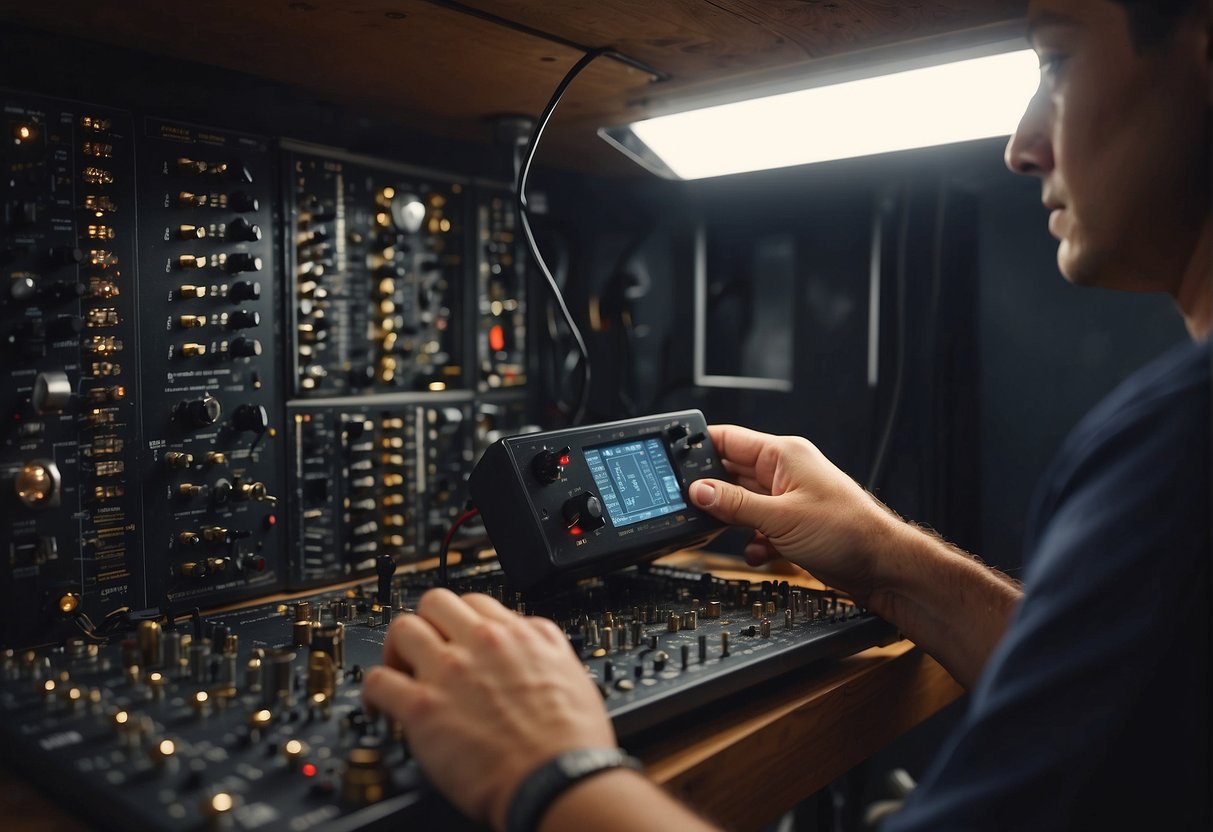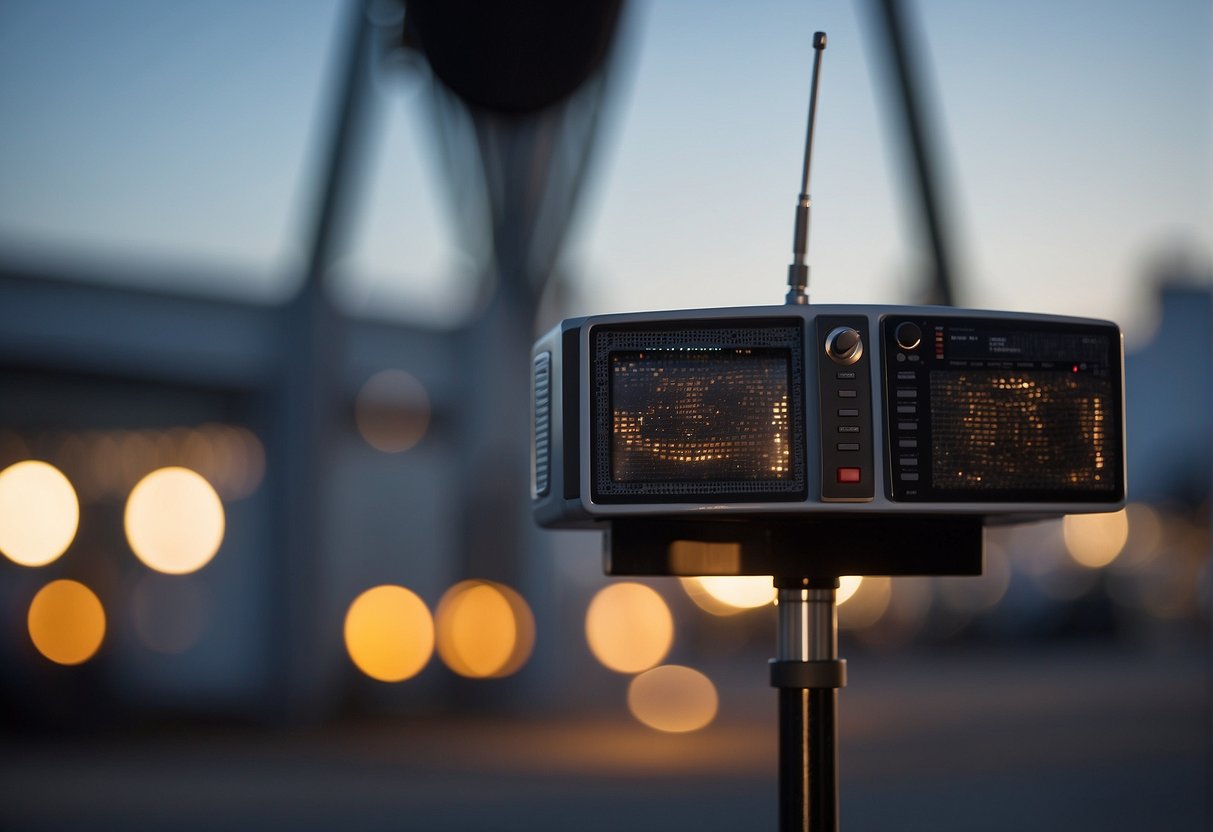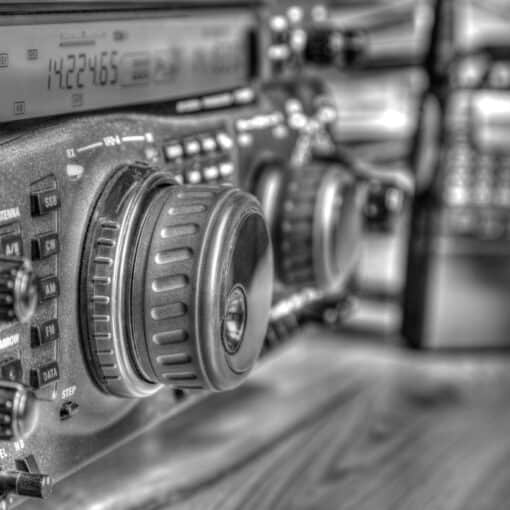In the realm of radio communications, ham radio enthusiasts often face the challenge of unwanted signal interference. This interference can disrupt clear communication, affect various electronic devices, and can be a source of irritation for both operators and non-operators alike. Effective strategies for blocking or reducing this interference are crucial to maintain the quality of transmissions and the proper functioning of electronics susceptible to these signals.


One way to tackle this problem is through a better understanding of the nature and source of ham radio signals. Once identified, various techniques can be implemented to prevent and block these signals. Methods range from simple adjustments around the home or office to more complex technical solutions. The choice of method will depend on specific circumstances, including the severity of the interference, the frequency of occurrence, and the equipment in use. It’s essential to implement these methods in compliance with regulatory guidelines to ensure both efficacy and legality.
Key Takeaways
- Effective signal interference management is crucial for clear communication.
- Identifying the source of interference is a prerequisite to mitigation.
- Solutions should align with legal and regulatory requirements.
Understanding Ham Radio Signals


Before delving into the technicalities of blocking ham radio signals, a fundamental comprehension of how these signals operate, their common sources of interference, and the inherent properties of radio waves is essential.
Basics of Ham Radio and Frequency
Ham radio, a hobby that involves the use of radio frequencies for non-commercial exchange of messages, is deeply rooted in an understanding of frequency. Frequencies, measured in hertz (Hz), determine the number of times a wave oscillates per second. Ham radios operate on a variety of radio frequencies designated by the Federal Communications Commission (FCC) to facilitate communication without interfering with commercial and emergency broadcasts.
- Amateur Bands: Ham radio operators communicate across several bands ranging from 1.8 MHz (160 meters) to 275 GHz (1 millimeter).
- Licensing: Users are required to be licensed and to operate within allocated frequencies, ensuring structured and respectful use of the airwaves.
Common Sources of Interference
Interference in ham radio is not uncommon and can stem from a plethora of electromagnetic radiation sources. These can be as varied as household appliances to nearby commercial transmitters:
- Industrial, Scientific, and Medical (ISM) Equipment: Devices like microwave ovens can emit non-ionizing radiation, disrupting ham radio transmissions.
- Other Radio Services: Nearby communication services may inadvertently cross into ham frequencies, leading to cross-modulation or intermodulation interference.
Radio Wave Properties
Understanding the properties of radio waves is crucial for identifying how they might be blocked or mitigated. As a form of non-ionizing radiation, these waves can be absorbed, reflected, or refracted by various materials:
- Frequency: Higher frequency waves (VHF/UHF) tend to travel in straight lines and are absorbed or blocked more easily than lower frequency (HF) waves which can reflect off the ionosphere.
- Polarization: The orientation of the electric field in a radio wave, either horizontal or vertical, can impact its ability to penetrate or be blocked by certain materials.
By grasping these core aspects, one positions themselves better to tackle the challenge of signal interference effectively.
Preventive Measures


Proactive steps can significantly reduce instances of ham radio signal interference. These steps span from strategic set up to regular maintenance.
Strategic Location and Positioning
Selecting an optimal location for the ham radio setup is crucial. This involves placing the transmitter away from household appliances and computers that may cause or be susceptible to interference. Aim for a space that’s isolated from high-traffic areas in the home to prevent signal congestion.
Proper Antenna Installation
Antenna effectiveness depends greatly on its installation. An antenna with the correct gain and height maximizes the signal strength and quality. Ensure that the antenna is installed at an appropriate height, often higher is better, and be aware that proximity to metal structures or towers can impact performance. For example, attaching antennas to metal structures can induce unwanted currents that interfere with signal clarity.
The Role of Equipment Maintenance
Regularly check and maintain all the components of the ham radio set, from the physical cable connections to the integrity of the home networks they’re connected to. Poorly maintained equipment can introduce noise into the system, which can be misinterpreted as external interference. Ensure all connections are secure, and replace any worn or damaged parts promptly.
Signal Blocking Techniques
To mitigate unwanted ham radio signals, one can employ various materials and methods designed to block or attenuate the signal’s strength. These techniques range from the use of specific shielding materials to strategic placement of metal barriers and the implementation of specialized electric filters.
Using Shielding Materials
Materials such as aluminum and copper are effective in blocking radio signals due to their conductive properties. For example, aluminum meshes can create barriers that diminish radio frequency (RF) penetration, whereas carbon-based RF blocking paint applied to surfaces can reduce signal intrusion.
Blocking Methods with Foil and Metal
Aluminum foil is a readily available and simple solution for signal blocking. Wrapping foil around devices or using it to line walls can reflect and absorb radio waves. In addition, strategically placed metal objects, like sheets or screens, can provide more substantial interference to block or reroute signals.
Incorporating Effective Filters
To specifically target interference, electric filters are a practical option. These filters can be installed on cables and connectors to diminish unwanted frequencies. They work by allowing the passage of desired signals while blocking or greatly attenuating frequencies that could cause interference or congestion.
Interference Resolution Strategies
Ham radio enthusiasts often need to employ specific strategies to resolve interference issues. These methods are targeted and effective, focusing on collaboration with utility providers, managing electrical discharge phenomena, and handling disturbances caused by weather.
Communication with Local Power Company
One encounters interference from power lines due to various issues like loose hardware or corroded insulators. It is crucial to establish communication with the local power company to report and resolve such interference. They have the necessary equipment and expertise to pinpoint and rectify the problem, ensuring clear radio communications.
Reducing Corona Discharge and Arcing
Electrical components under high voltage may emit corona discharge, a type of interference. They should regularly inspect and maintain their equipment to mitigate this effect. Additionally, minimizing arcing—an electrical breakdown of gas that produces radio frequency interference—can involve using arc-suppression devices or re-routing the antenna system.
Coping with Weather-Induced Disturbances
Bad weather, such as thunderstorms, can induce interference in ham radio signals. A comprehensive approach includes grounding the antenna system to divert surge-related interference and using protective devices to absorb shock from lightning strikes. Proactively monitoring weather patterns and securing equipment can also help one cope with these atmospheric disturbances.
Mitigation of Electronic Noise
Mitigating electronic noise is vital for ensuring clear communication in ham radio operations. This section discusses practical solutions for minimizing disruptions caused by electronic noise within a household setting, network environment, and through the application of specialized materials.
Dealing with Household Electronic Noise
Household electronic noise often stems from various appliances that emit RF signals, which can interfere with ham radio operations. To combat this, one should:
- Identify and unplug unnecessary devices that generate dirty energy.
- Use filters designed for ham radios to suppress noise from essential appliances.
It’s crucial to trace the noise to its source—like a specific appliance—so targeted measures can be taken.
Neutralizing Electric Noise from Networks
Home networks can introduce significant electric noise into the radio communication environment. To reduce such noise, one can:
- Ensure all networking equipment is properly grounded.
- Implement ferrite beads or chokes on cables to decrease noise conducted by home networks.
These methods help filter out unwanted electrical interference originating from network devices.
Understanding RF Blocking Paint and Materials
RF blocking paint and materials provide a robust solution to shield spaces from external RF signals. They work by creating an RF-impermeable barrier, useful in:
- Painting walls to block external RF noise.
- Utilizing materials in constructing dedicated ham radio operation spaces.
These materials are specifically designed to absorb or reflect RF waves, therefore, preventing electronic noise from compromising signal integrity.
Using these techniques, one can significantly reduce the impact of electronic noise on ham radio operations.
Regulatory Compliance and Best Practices
Within the framework of ham radio operations, it is imperative to align with regulatory standards and engage in recognized best practices to ensure legal compliance and maintain the integrity of the radio communications community.
Adherence to Licensing Requirements
To legally operate ham radio equipment, an individual must obtain a license from the relevant authorities. This involves passing an examination that assesses knowledge of electronics, regulations, and operational protocols. Only licensed individuals are permitted to transmit on ham radio frequencies, which ensures that all operators have the requisite knowledge to avoid causing harmful interference. It is crucial to:
- Maintain an up-to-date license and call sign.
- Operate transmitters within the allocated frequency bands and power levels defined by the license.
Ham Radio Etiquette and Neighbor Relations
Effective ham radio practice transcends technical skill; it also involves courteous etiquette and responsible management of neighbor relations, particularly concerning privacy. Operators should:
- Respect the privacy of others by refraining from broadcasting sensitive information.
- Strive to minimize interference with neighboring electronics, ensuring the enjoyment and safety of all involved.
- Foster good relations through clear communication, especially when dealing with interference issues that may arise.
By adhering to licensing requirements and practicing good etiquette, ham radio operators contribute to a respectful and law-abiding community.
Advanced Blocking Solutions
In addressing the challenge of blocking unwanted ham radio signals, advanced solutions often involve the strategic use of conductive metals, exploration of dielectric materials, and investment in specialized equipment. The effectiveness of these methods varies, and selecting the right combination is crucial for successful signal mitigation.
Utilization of Conductive Metals
Conductive metals, such as aluminum and copper, are highly effective at reflecting and absorbing radio frequency (RF) energy. By encasing a receiver or transceiver in a metal shield, commonly known as a Faraday cage, one can significantly reduce interference. For example, foil is among the simplest and cheapest materials used for blocking signals.
Exploring Dielectric Materials
Dielectric materials, which are insulators, can also affect radio waves. Materials such as plastic or glass can act as barriers by reflecting and absorbing electromagnetic energy, without themselves becoming conductive. For advanced blocking, one may consider using dielectric panels positioned strategically around sensitive equipment.
Investing in Specialized Blocking Equipment
Finally, investing in specialized blocking equipment designed for RF interference mitigation can be highly effective. This could include electric filters to clean the noise from power lines or RF-blocking wallpapers or paint for a room where sensitive electronic communications equipment is stored. This type of equipment is specifically engineered to reduce or eliminate unwanted radio frequency interference.
DIY Interference Suppression
In tackling ham radio signal interference, one can employ a range of do-it-yourself strategies. From simple household items to building custom RF filters, these methods can assist in ensuring a clearer signal.
Simple Home Remedies for Signal Interference
Individuals may utilize common materials like foil to shield and reduce radio frequency interference. Wrapping foil around cables can act as a rudimentary barrier against external radio waves. Similarly, wax paper or plastic wrap can be used to create layers of insulation, although their effectiveness is comparatively less than that of metallic solutions.
- Foil: Wrap around cables to shield against RFI.
- Wax Paper/Plastic Wrap: Layer around devices for minimal insulation.
Effective Homemade RF Filters
Constructing homemade RF filters requires electronic components but can significantly improve signal clarity. One can assemble a basic filter using capacitors and inductors that block radio waves at certain frequencies. These filters can be attached to various input and output ports on a radio to cut down the amount of interference received or transmitted.
- Filters:
- Capacitors: Install in series with the signal line.
- Inductors: Place parallel to the signal path.
Creating a Radio Quiet Zone
Establishing a radio quiet zone involves re-positioning electronics and creating physical barriers with materials that absorb or reflect RF signals. For instance, strategically placed cotton curtains can dampen radio frequency waves, though its efficacy is moderate. More substantial barriers can be erected using denser materials to create a controlled environment less prone to interference.
- Physical Barriers:
- Cotton: Use as curtains to partially absorb RF signals.
- Dense Materials: Implement for stronger reflection and absorption of radio waves.
Impact on Health and Environment
When considering how to block ham radio signals, it is imperative to address the associated health and environmental concerns. Specifically, the effects of non-ionizing radiation on health, safety protocols for electromagnetic radiation, and differentiating between myths and factual information about radio frequency exposure are fundamental.
Non-Ionizing Radiation Concerns
Non-ionizing radiation from ham radios is a type of electromagnetic radiation that does not carry enough energy to ionize atoms or molecules. This classification implies that it does not have the same risks as ionizing radiation, such as X-rays or gamma rays. Non-ionizing radiation is categorized as a possible carcinogen based on limited evidence of cancer risk; however, this is under the condition of long-term and high-level exposure.
Electromagnetic Radiation and Safety
Safety around electromagnetic radiation, particularly with ham radio operations, must be considered due to the potential for thermal effects. At high enough power densities, this radiation can cause harm by heating body tissue, which in severe cases can result in medical conditions like blindness or sterility. It is crucial to abide by recommended safety standards to mitigate such risks.
Myths and Facts About Radio Frequency Exposure
Many misconceptions surround radio frequency (RF) exposure, contrasting sharply with scientific findings. For instance, the health implications of RF from ham radios should not be conflated with unrelated issues, such as concerns about privacy. It is important to rely on scientifically substantiated information to determine the true impact of RF exposure, as false beliefs do not contribute to the effective management of radio waves and their influence on health and the environment.
Balancing the desire to block ham radio signals with an understanding of their health and environmental impact requires a clear comprehension of the scientific principles at play and the actual risks involved.
Alternative Materials and Techniques
When it comes to blocking ham radio signals, traditional methods like metal shielding are the norm, but there are various non-metallic materials and building modifications that can also offer significant interference mitigation.
Non-Traditional Shielding Options
Plastics and ceramics are often overlooked as materials for radio interference shielding, yet they possess certain properties that can be beneficial. For instance, some plastics can be treated with metallic coatings to reflect radio waves. An example of effective utilization is when Teflon, known for its low conductivity, is used in conjunction with other materials to create barriers that disrupt radio frequency signals.
Liquid water has a high attenuation effect on radio frequency signals. Strategically placing containers of water or designing water features in areas could offer a level of RF signal reduction. Paper, often not considered a shield, can be infused or layered with conductive materials to create a barrier that is lightweight and effective.
Use of Building Materials for Interference Mitigation
The structure of a building itself can serve to weaken radio signals. Wood, having a moderate level of attenuation, can contribute to reducing radio frequency penetration when incorporated into walls or barriers. Additionally, insulation materials commonly found in buildings not only provide thermal benefits but can also be adapted to reduce electromagnetic interference.
Wallpaper designed specifically to block RF signals is available; this wallpaper is usually reinforced with conductive materials and can be an aesthetically pleasing option for RF mitigation. Similarly, wall paint containing conductive elements can be applied to interior surfaces to create an RF-resistant layer.
Frequently Asked Questions
In addressing interference and blocking ham radio signals, it is crucial to consider reliable solutions based on the environment—be it at home, in a vehicle, or from a neighbor.
What methods are effective for blocking ham radio signals in my vehicle?
To block ham radio signals in a vehicle, installing ferrite beads on cables can minimize interference. Additionally, implementing a high-pass filter may prevent unwanted signals from affecting your vehicle’s electronic systems.
How can I prevent ham radio signal interference in my home?
Interference in a home can often be addressed with materials that absorb or reflect radio waves. Utilizing RF blocking paint or installing metal screens on windows are methods that effectively reduce signal intrusion.
What are the appropriate steps to handle ham radio interference from a neighbor?
One should first verify the source of the interference. Diplomatic communication with the neighbor is advised to resolve the issue amicably. If that fails, using RF shielding methods or consulting with a professional for technical solutions is recommended.
How do I file a complaint with the FCC regarding ham radio signal issues?
A complaint concerning ham radio signals can be filed through the FCC’s Consumer Complaint Center. It’s important to provide detailed information about the interference, including dates, times, and how it affects your devices.
Reporting radio interference entails contacting local authorities or a governing body specialized in communications, such as the FCC. Documentation of the interference is vital for a formal investigation.
How can I shield my equipment from unwanted RF signals?
Shielding equipment from RF signals involves using conductive or magnetic materials to create barriers. Implementing RF blocking paint or metal cages, known as Faraday cages, around sensitive devices can greatly diminish unwanted signals.





